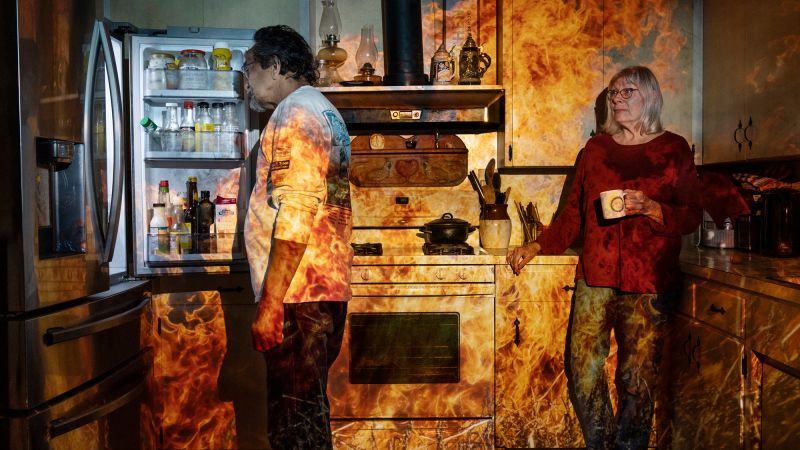The article discusses the compelling photography series by Edoardo Delille and Giulia Piermartiri, which captures the potential future of the Maldives and other vulnerable regions threatened by climate change. Their images depict chilling scenarios—such as a family standing under a diver in their home—as a warning about rising sea levels, particularly in the Maldives, which could become largely uninhabitable by 2050.
Their project, originally called “Diving Maldives” and now part of “Atlas of the New World,” uses a blend of scientific data and analog photography techniques to illustrate how landscapes may change by the end of the century. Locations featured include California, Mont Blanc, Mozambique, and others, emphasizing the stark effects of global warming. For instance, projections indicate California’s wildfire areas could increase by 2100%, and the iconic Mont Blanc is shown with rapidly diminishing glaciers.
The photographers aimed to highlight the disparity of climate change impacts, noting that the poorest communities are often the hardest hit. Delille stated, “Global warming is not democratic. The wealthy pollute and the poor suffer.”
In collaboration with experts, the project also features essays that add depth to the visual content. Delille and Piermartiri engaged with local residents during their work, capturing diverse perspectives on climate change’s impact on their lives. They emphasized that the conversations had as much weight as the photographs, revealing varied mindsets about global warming.
The project aims to serve as an educational tool for future generations, making the issues surrounding climate change more accessible and urgent, especially to younger audiences.
Source link


